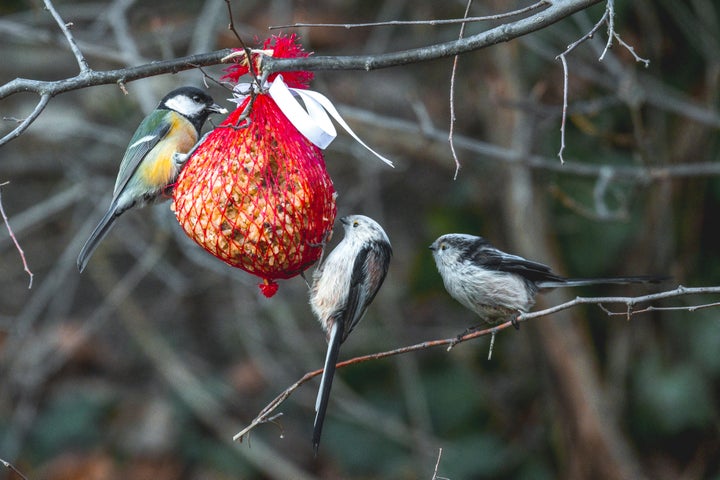
Starting to feel the cold? Same ― and we’re not alone.
As insect populations start to dwindle and your garden’s autumn bounty gently fades, unfortunately, the animals we love to love are starting to feel the chill too.
Bats, hedgehogs, and bees all struggle to feed themselves in the colder months. And while it’s always a good idea to leave a saucer of water out for wildlife, now might be time for extra measures ― think meat-based cat food (never fish-based) for hedgehogs and, of course, bird feed for your flying friends.
Fat blocks in particular can be attractive to, and beneficial for, multiple species of birds. After all, as Gardener’s World points out, “They need calorie-rich suet, sunflower hearts and peanuts to maintain fat reserves on frosty nights.”
But not all suet balls are created equal. If (like me) you’ve bought the classic suet ball in green netting before, you might want to reconsider your feeding technique.
The Royal Horticultural Society (RHS) recommends “placing fat blocks in wire cages” rather than hanging them in netting. So, we thought we’d explain why, and share some extra feeding tips for autumn.
What’s the problem?
I know ― feels like no good deed goes unpunished, right?
But the problems are pretty understandable when you think about it.The RHS says that some birds, like woodpeckers, get their tongues stuck in the mesh (poor things).
Another factor is squirrels, who can easily access a more exposed fat ball.
It’s important to hang your caged suet balls up high, too, so cats can’t access the birds feeding on them. You should even consider keeping them “away from cat perches such as branches and walls,” says the RSPCA.
Any other tips?
Yes! First of all, keep your bird table roof sloped ― this is to ensure cats can’t perch on it. And use materials like metal for the pole that cats can’t climb.
You should also ensure that peanuts are placed in a finely-meshed cage, because full-sized peanuts can be a choking hazard for some birds.
You can also “put out finely chopped bacon rind and grated cheese for small birds such as wrens,” the RHS says, while “thrushes and blackbirds favour fruit... Scatter over-ripe apples, raisins and song-bird mixes on the ground for them.”
It’s also a good idea to leave any seeds left on herbaceous plants untouched, as these provide a natural food source.
And lastly ― enjoy the birds!